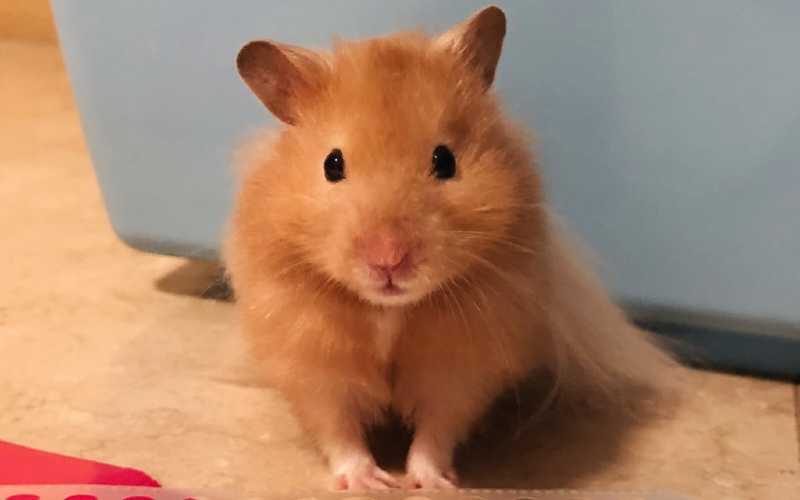hamsterhappy.co.uk is a participant in the Amazon Services LLC Associates Program and other affiliate advertising programs designed to provide a means for us to earn fees by linking to Amazon.com and affiliated sites. Affiliate links may be used on this page and in hamsterhappy.co.uk articles, but they do not impact on the price that you pay and they do help me to get this information to you for free. Read my privacy policy for more information regarding affiliates.
Today’s article is all about one of the most popular hamster breeds – the Syrian hamster. We are going to take a look at the characteristics of the breed and what makes it such a good pet.
What Is A Syrian Hamster?
The Syrian Hamster or Golden Hamster is one of the five domesticated hamster breeds. It is the largest example, often growing to around 6 or 7 inches long as an adult and averaging 150 grams in weight. This makes it more than twice as big as some of the dwarf hamster breeds. Although most Syrian Hamsters are golden brown with pale underbellies, they come in a variety of colours and coat patterns, including black, banded, cinnamon and tortoiseshell. There are even long-haired varieties, sometimes referred to as Teddy Bear Hamsters.
Syrian Hamsters will usually live to around 2 or 3 years old and they are by far and away the most common hamster breed among pet owners. As the name might suggest, they originally come from the desert regions of the Middle-East, predominantly from northern Syria.
Syrian Hamsters In The Wild
Syrian Hamsters originate in Syria, but can also be found in some parts of southern Turkey. In the wild, the species is not very common and the population is unfortunately in decline due to habitat loss. The animals prefer to live in rocky desert areas, which are often characterised by extremely hot temperatures during the day. For this reason, Syrian Hamsters are nocturnal, choosing to be active at night when the air is much cooler.
During the day, they will spend most of their time sleeping in underground burrows, which they construct using their strong front paws. The cheek pouches of a Syrian hamster are another adaptation to their environment. These allow them to store large amounts of food, which can often be rare in the desert, meaning they can make the most of any meals when they become available.
Do Syrian Hamsters Make Good Pets?
Syrian Hamsters can make excellent pets. Their small size and relatively low cost makes them ideal for smaller houses or those who are looking for pets that are more affordable. While they have a few special requirements to keep them happy and healthy, their housing is easy to maintain once set up. Additionally, Syrian Hamsters are very active, intelligent creatures and can be great companion animals when cared for correctly, able to provide much joy and entertainment for their owners.
They tend to be quite docile creatures, making them good for handling. They might be a little shy when young and being handled for the first time, but they will gradually get used to being picked up over time. Furthermore, Syrian Hamsters are hardy animals and are generally less affected by diseases in comparison to other domestic animals, reducing the chance of any unfortunate events that might lead to expensive vet bills.
Syrian Hamster Care Tips
There are a few things to keep in mind when bringing a Syrian Hamster into your life. Due to their nocturnal tendencies, they can sometimes be quite loud during the night as they explore their cages or play in their wheels. They also need some exercise outside of their cages on a daily basis and its best to invest in an exercise ball or a playpen for this reason.
Additionally, Syrian Hamsters are quite territorial animals and don’t take well to being kept with other hamsters. They won’t get lonely by themselves, as long as they get some social interaction with their owners on a regular basis. To keep a Syrian Hamster’s stomach happy, they should be fed a diet largely composed of nuts, grains and seeds. This can be supplemented with fruits or vegetables, as well as the occasional treat, however their digestive systems can be sensitive and its best to check before feeding a hamster something new.
If you enjoyed this article you might also like to read about Teddy Bear Hamsters.



2 thoughts on “Syrian Hamsters”